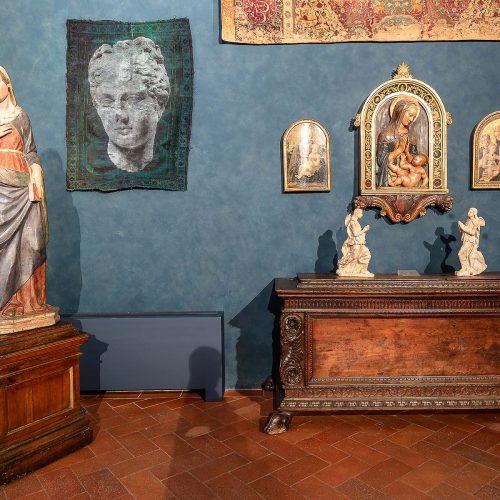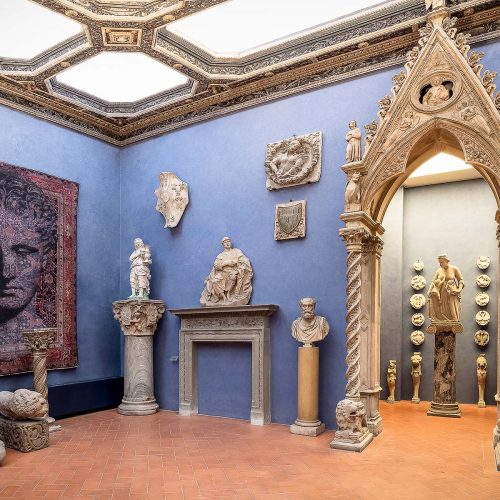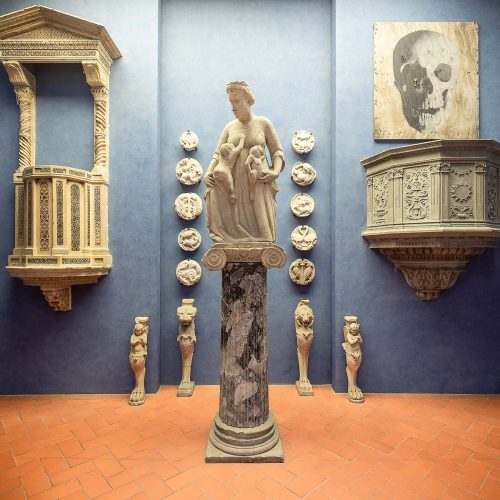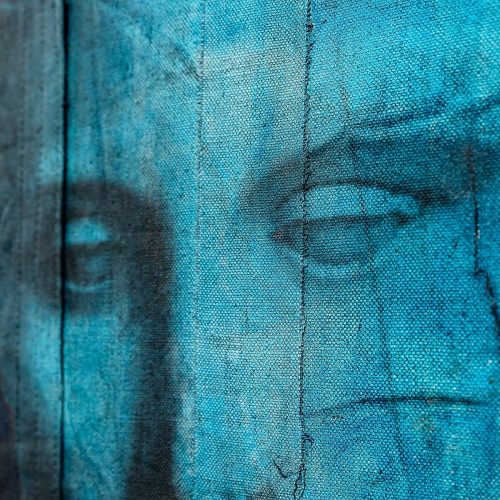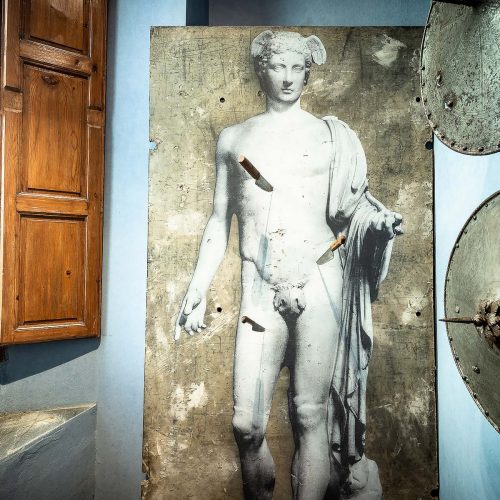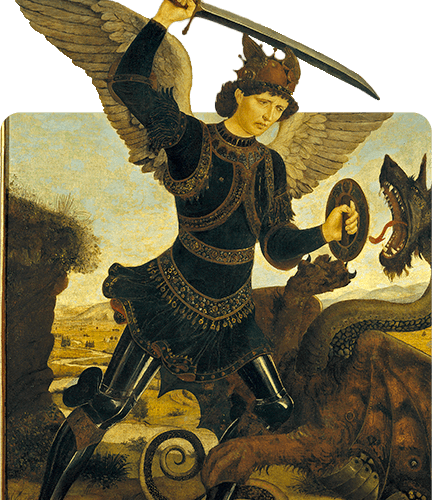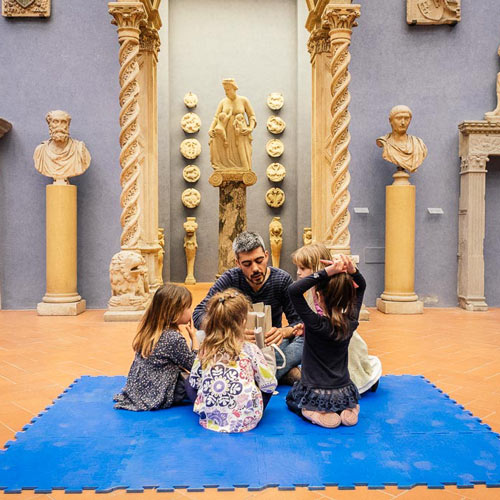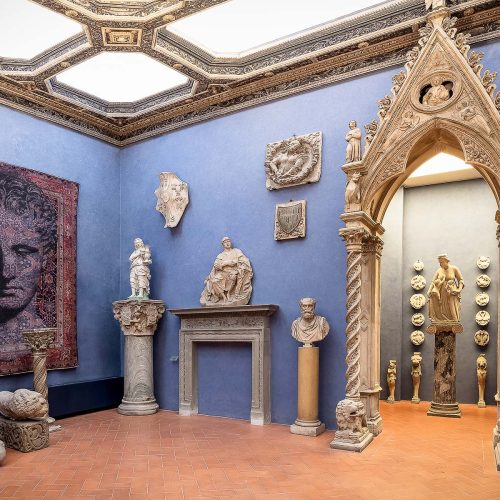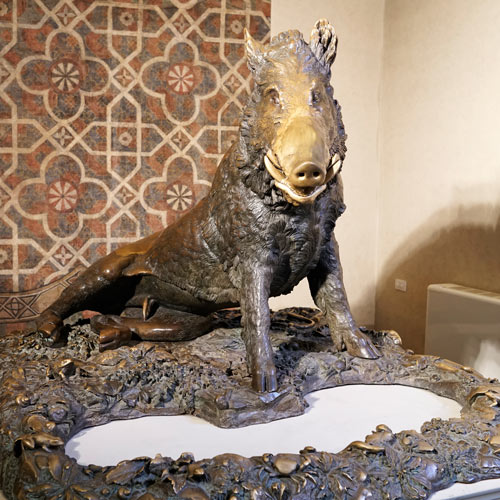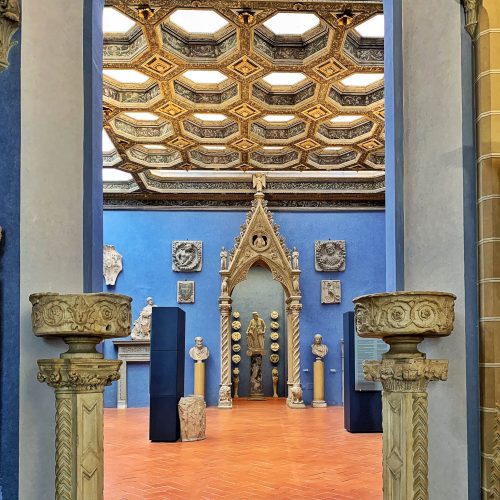Luca Pignatelli
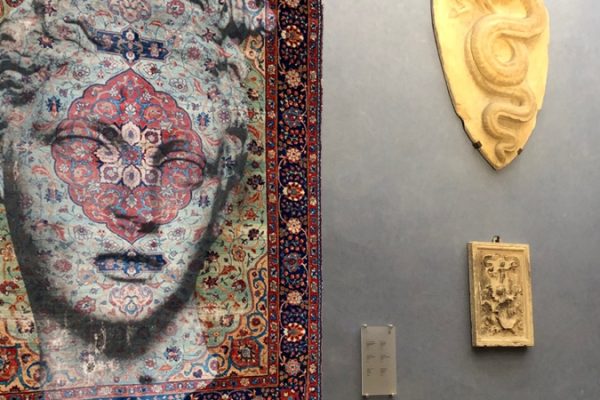
al 25 Marzo 19
31 Maggio
30 Settembre
Attraversare il tempo
A distanza di poco più di tre anni da “Migranti”, la sua personale nella Sala del Camino della Galleria degli Uffizi, Luca Pignatelli torna a Firenze per un altro evento espositivo che testimonia il ripetuto attraversamento del tempo storico compiuto dalla sua arte in senso inverso rispetto a quanti citano il passato con accademica nostalgia. Nelle sale del Bardini saranno esposti una serie di lavori su telone ferroviario, legno, carta e lamiera, assieme a grandi dipinti realizzati su tappeti persiani di inizio novecento. Queste ultime produzione dell’artista saranno coerentemente associati alla vasta e rilevante collezione di tappeti del Museo stesso dal ‘400 ad oggi, compreso un manufatto tessile di oltre sette metri utilizzato in occasione della visita di Hitler a Firenze nel 1938. Una nuova serie di lavori su carta verranno, altresì esposti in un allestimento site-specific che coinvolgerà le cornici e gli arredi presenti nella collezione del Museo.
“La mia ricerca degli ultimi anni – dice Pignatelli – è un ripensare che cos’è il tempo rispetto all’immagine, ai quadri. Io credo che oggi sia importante collocare l’immagine al centro di una riflessione sulla memoria e il museo Bardini è un simbolo nel mondo di cosa significhi una raccolta capace di rappresentare una stratificazione di tempi ma anche di culture. Con questa mostra vorrei rispondere alla domanda: cosa sta di fronte a un’immagine? Per me si tratta di un tempo plurale, un montaggio di temporaneità, sfalsate e quindi differenti”.
I dipinti di Pignatelli ospitano al centro un variato materiale iconografico antiquario che strappato all’oblio o alla fossilizzazione, alla commercializzazione e al feticismo, restituisce in un linguaggio del presente l’esperienza stessa della classicità, come se quella civiltà non fosse mai svanita, o trapassata, ma fosse una reale presenza tra le immagini circolante tra noi.
In altre parole le sue immagini sono quelle di una classicità sempre viva e presente che non parla il linguaggio muto, inanimato della copia. Quelle sue figure collocate al centro dello spazio di rappresentazione vivono un tempo che si ripete identico al proprio originale ed entrano immediatamente in comunicazione con il nostro mutevole essere, divenire, trapassare.
Una classicità che integra e comprende anche l’archeologia del moderno, con le sue metropoli, le sue macchine a vapore, quelle volanti in cieli cupi, grandi navi che solcano gli oceani. Si ha l’impressione che Pignatelli sappia prelevare immagini dai repertori iconografici per isolare icone, figure che hanno la forza di veri e propri archetipi dell’inconscio collettivo, che si sono depositate non solo nella nostra memoria visiva, ma nei nostri sentimenti, nelle nostre emozioni. Come gli aerei da guerra che attraversano il tempo storico e trasformano in qualcosa di ancora presente l’incubo della tragedia bellica. O lo skyline di New York, un pezzo della nostra mitologia sentimentale che appartiene a tutti noi, in una sovrapposizione mnemonica collettiva, che è quella del cinema e della fotografia, della cronaca e dello spettacolo.
“Con le opere di Luca Pignatelli – afferma il direttore artistico del Museo Novecento, Sergio Risaliti – accade che tempo storico e tempo dell’arte risorgono allo sguardo come tempo presente, una stratificazione di memorie che lasciano emergere un sentimento di eternità incolmabile che tuttavia si riproduce ogni volta con l’apparizione-appropriazione di forme e proporzioni classiche: una statua intera, un busto, un’architettura, un frammento Il Museo Bardini è il luogo ideale per questo tipo di rivelazione che è esperienza di bellezza e di temporalità allo stesso tempo, nello stesso momento. E questa mostra è anche un passo avanti nella ridefinizione dell’identità e funzione del Museo Novecento, dislocato oltre la sua sede originale”.
Nei dipinti di Pignatelli, le ‘teste’ di età greca o romana hanno spesse volte gli occhi chiusi, sono introverse, lasciano tutto in sospeso, facendoci avvertire solo l’eco di emozioni grandiose, immense, di qualcosa di infinito e senza tempo. Evocare la classicità, anche quella del modernismo, può significare per Pignatelli alludere a qualcosa di incommensurabile, fare spazio a un desiderio di grandezza e di vastità che ha qualcosa di sublime. Riconosciamo in tutto questo sentire, rivivere, un’esperienza neo-romantica della nostalgia che viene drammatizzata dall’uso di supporti poveri o industriali, carichi anch’essi di memoria, per una dialettica tra segni e materiali che non può essere ridotta a mera suggestione linguistica o cinica citazione. Un sentimento di ammirazione e nostalgia per la classicità e il modernismo con le sue illusione e le sue tragedie che non è tanto si rivolge verso la monumentalità per citarne la forma retorica ma vive di un desiderio di bellezza che la memoria rivela al soggetto contemporaneo quando sappia ritrovare il tempo della contemplazione attiva.
Sarà pubblicato un catalogo a colori edito da Forma edizioni con un saggio di Sergio Risaliti e la conversazione tra Luca Pignatelli e Pierluigi Panza.

